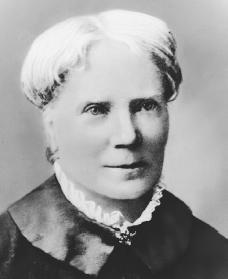Funny day. Well, the funniest thing was Gabriel receiving a letter from the Bulloch County Sheriff urging the hearty enforcer to become a member of the honorary sheriff's association or some such hogwash.
The documentary I watched, The Rape of Europa, sure wasn't funny. It was sobering, clear, intelligent, vivid, sad, very well done. Astonishing bit of history.
The Spencer Quinn book I finished, Thereby Hangs a Tail, was kinda funny. Quinn, aka Peter Abrahams, is always solid, reliable. His books (the Bernie and Chet mysteries told from Chet the Dog's POV he writes as Spencer Quinn, the young adult novels he writes once a year or so) are never great, but never bad either. He's a good craftsman.
 |
| Women of Tehuantepec, 1939 |
This week's Mexican masterpiece is Oaxaca-born Rufino Tamayo's Women of Tehuantepec. Like some of Mexico's other famous artists, Tamayo (1899-1991) came to prominence in the 1930s. Unlike the Mexican muralists, Tamayo had no political ideology. His was a universalist art, with often simple subject matter - men, women, animals. Critics have elaborated on the complex metaphors, thematic transfiguration in his work. He had an extraordinary knowledge of pre-Colombian art and culture. His influences include the Impressionists, the Cubists, the Fauvists, the Abstract Expressionists, and the Surrealists. He had a mastery of color and his works often demonstrate the plasticity of paint (I won't go into this concept; there are places you can go to on the web that describe it, um... clearly, I guess). He did much independent, intensive studies of the masters, particularly the Europeans, and combined some of their styles with folk themes.
In the above painting, a piece inspired by his native land, Tamayo perhaps makes a reference to his aunt's fruit stand, which he worked at as a kid. The great Mexican writer Octavio Paz said that Tamayo's paintings are always distinguished by the light of the (often unseen) sun. Tehuantepec is a town in southern Mexico, and the women of the town (Tehauanas) are often the chief traders of the region. The colors are bright, the figures almost Cubist in their delineation and contour, the scene both familiar (it's identified by more than a few as "Mexican realism") and exotic. It can be seen in Buffalo's Albright-Knox Gallery.
Know who this is? Me neither - that is, if I hadn't been reading David McCullough's book about Americans in Paris. It's Elizabeth Blackwell, the first American woman to graduate and receive an M.D. in medicine from an American medical school. She was in Paris in the late 1840s, attending La Maternite, the world's finest maternity hospital. Before that, in America, the Kentucky-born Blackwell (who lived in, among other cities, Cincinnati and Charleston, South Carolina) was turned down from twenty-nine medical schools before being accepted at New York's Geneva Medical College. In Paris to study and learn more, she worked with mothers and children; unfortunately, she contracted a virulent form of conjunctivitis that left her permanently blind in one eye, which left her dreams of becoming a surgeon shattered and gone. Back in New York, she and her sister started a dispensary that later became a college for and operated entirely by women. She continued to fight for the rights of women to be admitted to medical schools, and she also organized a group of women field doctors during the Civil War. She fought for women's rights and reform for years afterward.
I just started a new thriller, Jason Goodwin's The Janissary Tree, a historical mystery set in the Ottoman Empire, featuring a eunuch hero (!). It's going to be challenging, and twenty pages in, I've already had to look up seven time-and-place-specific terms: ewer, seraskier, padishah, gozde, kapudan pasha, ferenghi, lala. Jeez, all this looking-up is making me want to lala! (Whatever happened to her?)

No comments:
Post a Comment